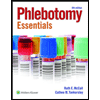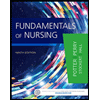When a patient exhibits a four-fold or greater rise in antibody titer against a specific microbial antigen between acute-phase and convalescent-phase serum samples, this is considered to be a “seroconversion”. Which of the following would be a correct interpretation of a seroconversion? what option below is the answer? None of the other four answers are a correct interpretation of a seroconversion These results show that the microbe itself has been detected in the patient’s sample(s) These findings cannot be interpreted because antibodies aren’t
When a patient exhibits a four-fold or greater rise in antibody titer against a specific microbial antigen between acute-phase and convalescent-phase serum samples, this is considered to be a “seroconversion”. Which of the following would be a correct interpretation of a seroconversion?
what option below is the answer?
None of the other four answers are a correct interpretation of a seroconversion
These results show that the microbe itself has been detected in the patient’s sample(s)
These findings cannot be interpreted because antibodies aren’t specific enough for antigens
There is no evidence of current active infection because that would require that the antibody titer is decreasing rather than increasing
The results show evidence of current or recent infection by the specific microbe because there has been an active immunologic response to its antigen
Trending now
This is a popular solution!
Step by step
Solved in 2 steps









